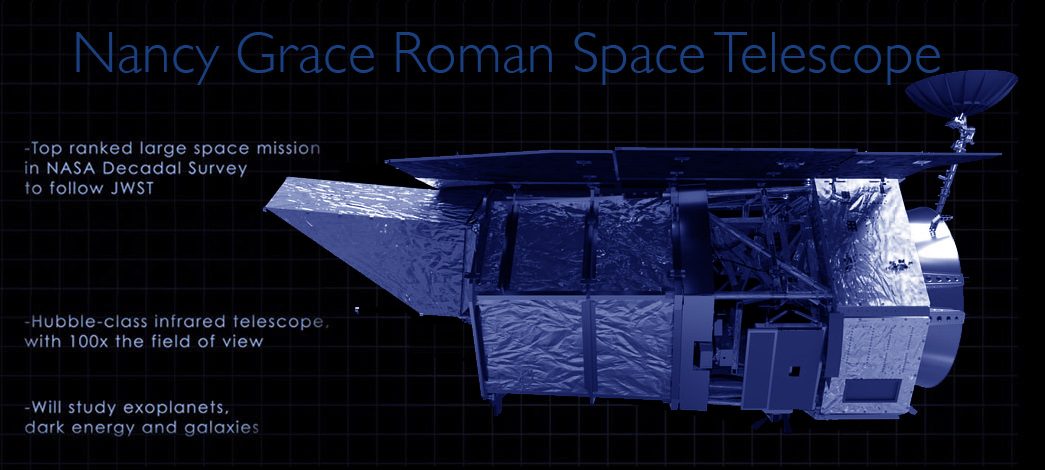
The Roman Space Telescope is a NASA observatory designed to settle essential questions in the areas of dark energy, exoplanets, and infrared astrophysics. The telescope has a primary mirror that is 2.4 meters in diameter (7.9 feet), and is the same size as the Hubble Space Telescope's primary mirror. The Roman Space Telescope will have two instruments, the Wide Field Instrument, and the Coronagraph Instrument technology demonstration.
The Wide Field Instrument will have a field of view that is 100 times greater than the Hubble infrared instrument, capturing more of the sky with less observing time. As the primary instrument, the Wide Field Instrument will measure light from a billion galaxies over the course of the mission lifetime. It will perform a microlensing survey of the inner Milky Way to find ~2,600 exoplanets. The Coronagraph Instrument technology demonstration will perform high contrast imaging and spectroscopy of individual nearby exoplanets.
The Roman Space Telescope will have a primary mission lifetime of 5 years, with a potential 5 year extended mission.
Why Roman?
Scheduled to launch in the mid-2020s, the Nancy Grace Roman Space Telescope will function as Hubble’s wide-eyed cousin. While just as sensitive as Hubble's cameras, the Roman Space Telescope's 300-megapixel Wide Field Instrument will image a sky area 100 times larger. This means a single Roman image will hold the equivalent detail of 100 pictures from Hubble.
Learn More

